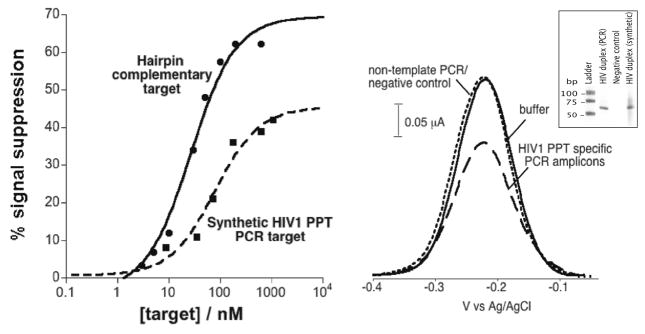Figure 6.
TFO sensor responds to unpurified PCR amplicons containing a triplex-forming element in the HIV-1 genome. (left) Specifically, test results using a synthetic, duplex oligonucleotide equivalent to the relevant HIV-1 sequence binds to the probe, albeit with a poorer dissociation constant and somewhat poorer signaling than those seen with a short hairpin target containing the same recognition footprint. These effects are presumably due to the larger size of the amplicon. (right) The sensor also responds rapidly and robustly to authentic PCR amplified target molecules (at 100 nM), while producing no signal change in response to negative control PCR samples. Polyacrylimide gel (right, inset) containing amplicons from HIV-specific PCR, a negative control (no template added to the PCR), and synthetic HIV duplex show the specificity of the PCR reaction. The size of our HIV target DNA is 63 bp.

